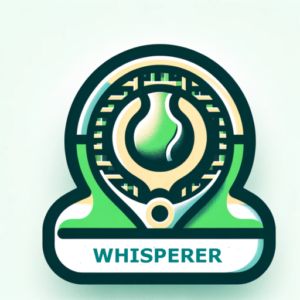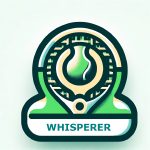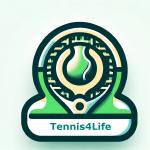Dark Arts: The Silent War Before the First Serve
Dark Arts: The Silent War Before the First Serve
Welcome to the Mind Games
In soccer, the “dark arts” of away games are legendary — pink dressing rooms to lower testosterone, cold showers, no toilet paper, or heating cranked to unbearable levels. All legal. All deliberate. All designed to disrupt.
Tennis doesn’t offer home-court manipulation — but it does something subtler, and often more personal. In a one-on-one sport where everything is visible and nothing is shared, the mind becomes both weapon and target. When you can’t control the court, you control the climate of the match — emotionally, mentally, and rhythmically.
Dark Arts of Tennis: The Guerrilla Psychology
Where soccer bends the environment, tennis bends your nervous system. It’s not about bending rules — it’s about bending rhythm, momentum, and perception.
Here are the most common psychological tactics — and the players who’ve made them famous:
Tactical Grunting
A disruptive grunt isn’t just noise — it’s timing interference.
-
Maria Sharapova turned it into a battle cry. Her piercing, extended grunts added pressure, especially at key moments.
-
Rafael Nadal uses it rhythmically, intensifying his grunt with the rally’s stakes — a subtle form of pressure escalation.
-
Aryna Sabalenka unleashes guttural sounds that match her aggression, disrupting timing and sending a clear message: you’re in for a war.
Grunting can mask contact timing, delay reaction, and inject psychological discomfort. It’s primal — and perfectly legal.
Deliberate Delays
Ball bounces, towel walks, shoelace ties — all designed to break your flow and reset theirs.
-
Novak Djokovic‘s double-digit ball bounces before serving aren’t superstition — they’re tactical pauses, designed to freeze and frustrate.
-
Victoria Azarenka has leveraged well-timed medical timeouts and prolonged routines to wrestle back momentum.
-
Daniil Medvedev, ever the disruptor, uses quirky tempo shifts and equipment fidgeting to keep opponents reactive, not proactive.
The goal? To control the tempo — and make sure you’re always playing on their terms.
Psychological Projection
From clenched jaw to racket toss, even controlled anger can be a performance — a bluff to alter your perception of control.
-
John McEnroe was the master of this. His legendary tirades weren’t random; they were rhythm disruptors, emotional fog machines, and crowd manipulators.
-
Andy Murray uses muttering and grimacing to camouflage recalibration — appearing fragile while recalculating.
-
Serena Williams channels emotion like a conductor, weaponizing fist pumps and stare-downs to signal a turning tide.
What looks like emotion is often just excellent theater — a calculated performance to disrupt and dominate.
Gear Flexing
A pristine kit, polished racquets, and symmetrical bag layout — it’s not just preparation, it’s psychological signaling: “I belong here more than you.”
-
Roger Federer made this an art form — arriving immaculate, calm, with matching gear, projecting regal authority.
-
Iga Świątek‘s methodical racquet changes and orderly setup reflect an internal calm that rattles chaos-prone opponents.
-
Carlos Alcaraz, even in his youth, walks with veteran polish. His gear game and presence say one thing: I’m already home.
Before the warm-up ends, the opponent is reminded who’s in control.
The Off-Court Aura and the Circle of Privacy
The real mental match begins off the court — in practice areas, club walkways, and even parking lots — long before the first ball is struck.
Elite players guard an invisible circle of privacy: a psychological buffer that protects their routine, identity, and self-belief. When that space is breached — even subtly — it can rattle focus, spike anxiety, and expose mental vulnerability.
Some players build their fortress in silence. Think Nadal — headphones on, eyes fixed forward, aura untouchable. Others claim space with presence — like Medvedev, loud, unpredictable, and impossible to ignore.
I remember playing John Newcombe, whose signature move after a big point was to stride confidently toward the net — closing space, sending a message. Today’s versions are just as bold: the stare-down, the emphatic “come on!”, or even the infamous finger to the face.
The tactic may change, but the message remains the same: “I control the narrative.”
“Never let them beat you without a racket.”
– The Tennis Whisperer
Where Soccer and Tennis Intersect
Both sports weaponize psychological discomfort.
-
In soccer: it’s physical discomfort — cold showers, cramped rooms, strange layouts.
-
In tennis: it’s emotional disruption — subtle, cerebral, and silent.
The battlefield isn’t just the court — it’s the space between routines, the timing of a stare, the weight of a pause.
Mental Armor
So how do you defend yourself?
-
Control the Ritual: Build identity-driven habits. Actions shape belief. Train like the player you want to be.
-
Defend Your Space: Own your circle of privacy. Your warm-up, your walk, your energy — protect it.
-
Use Pressure Tools: Techniques like the left-hand ball squeeze help reset your nervous system under pressure.
Wrap: The Match Starts Long Before the Serve
You may never face pink walls or broken showers — but you will face the dark arts.
They’ll come quietly: a stare, a pause, a grunt a second off.
Learn the game within the game. Master it — not to mimic, but to neutralize.
Because in competitive tennis, the first battle is psychological. And only those who win that fight…
…walk onto the court already ahead.



